Preserved lemons are commonly used in North African and Middle Eastern cuisine, and they may be found in some specialty food markets, but are often quite expensive. However, they’re extremely easy to make yourself.
If you, a friend, or a neighbor, have a particularly productive lemon tree, I highly recommend making your own preserved lemons.
This recipe can be made with regular lemons, including Eureka, or Lisbon, but if you have them available, Meyer lemons are preferred as they are slightly less acidic, and less bitter.
For this recipe you’ll need 10 blemish free, slightly under ripe lemons for preserving, but you will also need enough additional lemons to provide the juice for the brine.
The number of lemons required will vary depending on the type of lemons used, and their degree of ripeness. The Meyer lemons I used in this recipe required the juice of at least 30-35 additional lemons to provide enough juice. It’s a great way to use up a bumper harvest, just don’t get caught short on the lemons needed for the brine.
Preserved Meyer Lemons
Yield: 2 Wide Mouth 32 fl oz (1000 ml) Jars (10 preserved lemons)
10 Firm Meyer Lemons
6 oz Kosher Salt
3-1/2 Cups Fresh Meyer Lemon Juice
Juice enough lemons to provide at least 3-1/2 cups of fresh lemon juice, and set aside.
You can zest the lemons before cutting and juicing to use in other dishes.
Prepare two sterilized wide-mouth 1 quart canning jars, and their lids (see video below).
Scrub the lemons you’ll be preserving under running water to remove any dirt or debris, and carefully remove any attached stems or leaves.
Bring 3-4 quarts of water to a boil. Add the lemons to the water, return the pan to a boil, and cook until the lemons are slightly softened, approximately 3 minutes.
Remove the lemons from the boiling water with a slotted spoon, or carefully with tongs, and set aside in a colander to cool.
Place 1 Tbsp of Kosher salt into each of the two prepared quart jars.
Set each lemon, stem end down, on a cutting board, and slice in half vertically from the blossom to the stem end, being careful not to slice all the way through. Rotate the lemon 90 degrees, and repeat. When you’re done, each lemon should be sliced into even quarters that are still attached at the stem end.
In one hand, carefully hold the lemon quarters apart, and sprinkle 1 Tbsp of Kosher salt into the center of each lemon. Once salted, immediately pack the lemons into the prepared jars (5 lemons per jar).
Pour fresh lemon juice into each jar until the lemons are covered, leaving 1/2 inch of head space. Agitate each jar to removed any trapped air, and adjust the head space as necessary before sealing the jars.
Store the jars in a cool place, out of direct sunlight, for 3 weeks. Agitate each jar by tipping it upside down at least once every 24 hours, for three weeks. This keeps the salt more evenly distributed through the jars, and will prevent the lemons at the top of the jar from molding, or drying out.
After three weeks, transfer the jars to the refrigerator, where they can be stored for approximately 6 months.
Preserved lemons can be used in a wide array of dishes, from traditional Moroccan Tagines, to a variety of lamb dishes, couscous, salads, risottos, and even pasta dishes.
Once you’ve had preserved lemons, you’ll know what you’ve been missing, and you’ll want to use them in almost everything!
Before using the preserved lemons, briefly rinse them under cool running water to remove any excess salt, and enjoy!
——————
The following helpful video demonstrates the boiling-water bath canning technique for preparing the jars, including basic required equipment:
Note that the jars of preserved lemons are NOT processed in the canner after sealing, as the lemons would disintegrate. These lemons, once fermented, must be stored in the refrigerator.

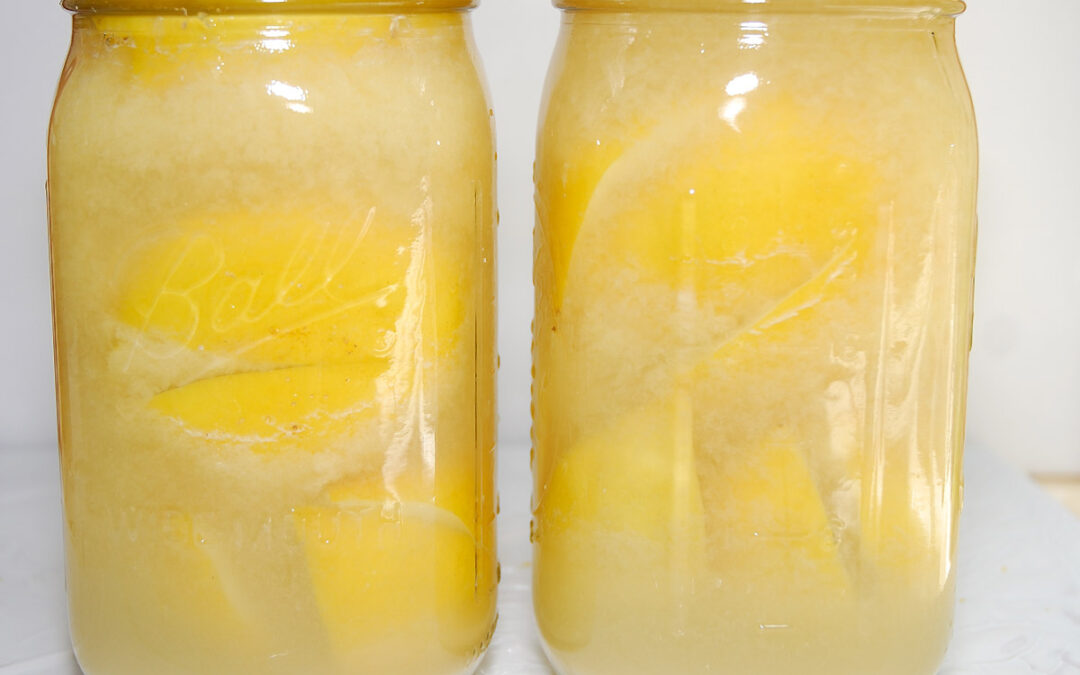
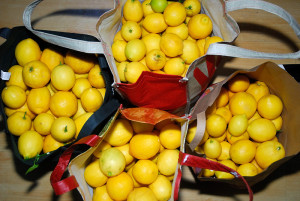
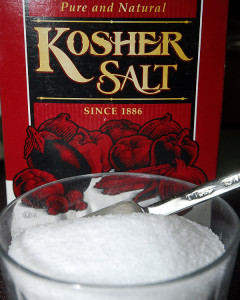
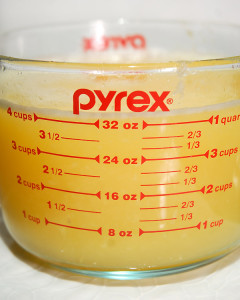

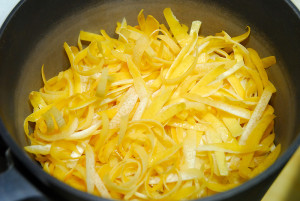
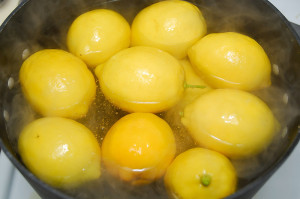
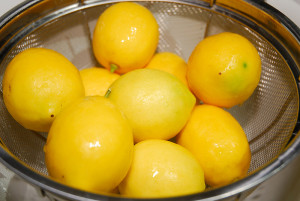
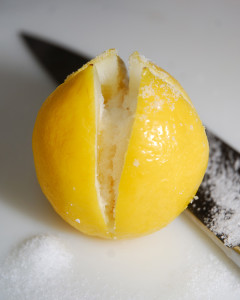
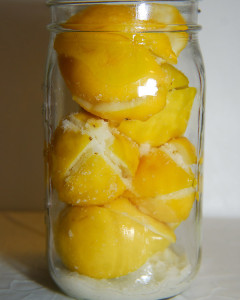
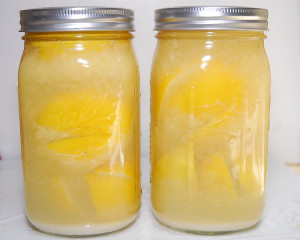
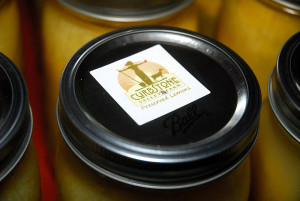







All your food making pictures are so gorgeous! They make me think you need to publish a cook book, or hire yourself out as a food stylist. 🙂 All of your posts and pictures look so appetizing that I start thinking that I should start making pickles and preserves and tomato sauce and…then I remember all of the things that I already have on my to-do list. Sigh. But, I still enjoy your pictures and daydream about having the time to use some of these recipes, so thank you for sharing them!
I know how difficult it was for me to find time to make pickles, and jams, this season. I’m fairly certain it would be impossible for you! 😛 I definitely don’t have time for a cookbook, but at least by posting my recipes, I’ll be able to find them again. Really, you should see the state of my desk that I’ve been trying to tidy up for the last 4 months!
I have never had Meyer lemons…they look amazing and I bet those you preserved taste luscious.
We’re quite blessed in here in California with our mild climate. We have a Meyer lemon tree here, but occasionally our winter temps can get very cold, and Meyers don’t tolerate a lot of chill. They definitely grow better right along the coast, where it rarely freezes. We’re very lucky to have friends with a VERY prolific and productive tree. It’s my understanding, though, that Meyers don’t ship well, which is why they’re not seen in very many markets. I think if I lived somewhere cold though, I’d at least try to grow one in a greenhouse! 🙂